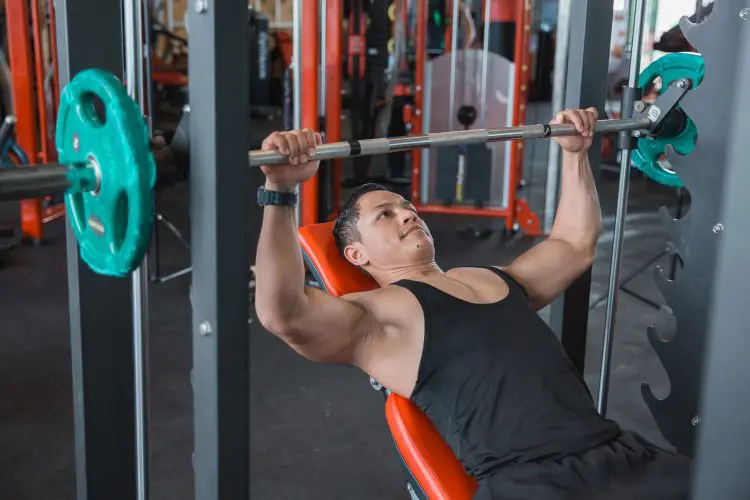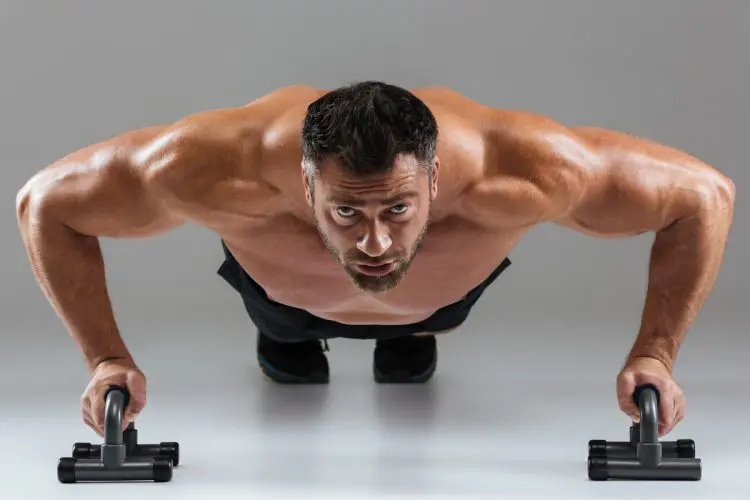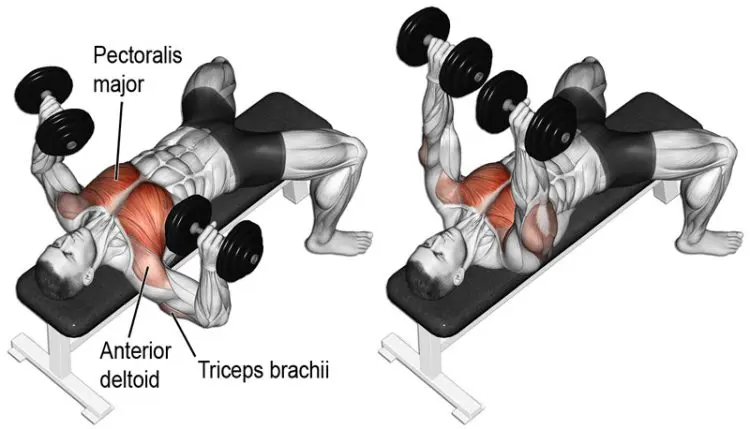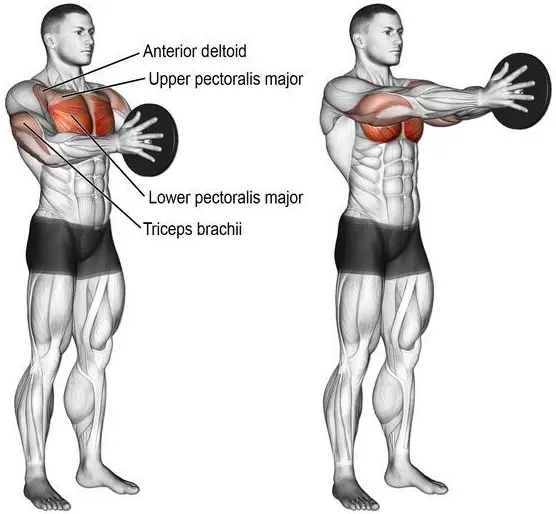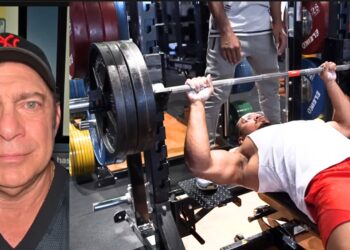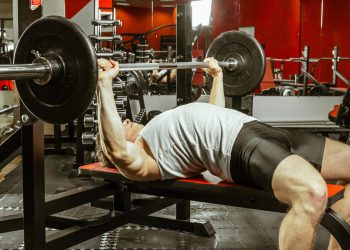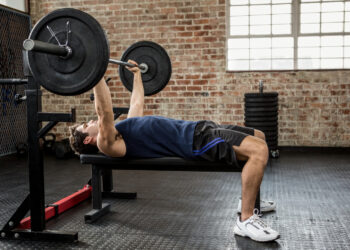The bench press is probably the most popular gym exercise in the world. You can see this popularity for yourself every Monday, which is national chest training day. Invariably, there will be a queue of people waiting to test their mettle on the bench press.
And it’s not just bodybuilders who love the bench press; it’s an integral part of the sport of powerlifting too. The bench press is the second lift contested in powerlifting meets, and some lifters even specialize in the bench press.
However, as useful and productive as the bench press can be, it would be a mistake to become over-reliant on this exercise. If you bench press too often, your muscles will become accustomed to it, and it will stop being so effective.
In addition, some exercisers find that the bench press causes shoulder pain and isn’t even the best exercise for building a bigger chest.
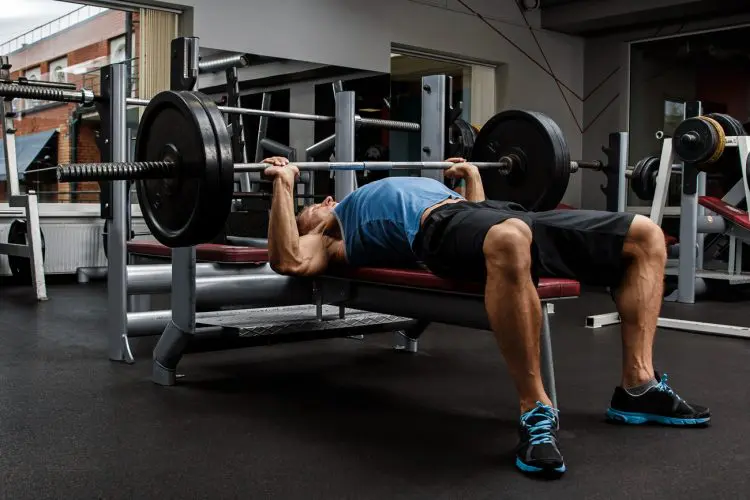
The good news is that there are plenty of exercises you can do instead of bench presses that are every bit as effective. Use these alternatives to keep your workouts fresh, build muscle faster, and avoid the injuries that the bench press can cause.
Bench Press 101
Before we delve into what you can do instead of the bench press, let’s take a moment to look at what makes this exercise so popular.
Level Up Your Fitness: Join our 💪 strong community in Fitness Volt Newsletter. Get daily inspiration, expert-backed workouts, nutrition tips, the latest in strength sports, and the support you need to reach your goals. Subscribe for free!
Bench presses are widely performed – virtually every gym on the planet has a bench press station. Your gym might not have an Olympic lifting platform or state-of-the-art treadmills, but it will probably have at least one dedicated bench so you can get your bench press fix.
Bench presses are an accepted measure of upper body strength – you don’t have to be a powerlifter to be interested in how much weight you can bench. It’s an accepted measure of upper body strength, and even non-gym goers will want to know how much you can bench. Numerous organizations use the bench press as part of their testing and selection processes, including the NFL.
Bench presses are relatively easy to learn – if you want to lift HUGE weights, bench pressing can become a very technical exercise. Watch a powerlifter setting up to bench press, and you’ll soon see that there is a lot more to this exercise than just lying down and repping out. But, in its most simple form, the bench press is relatively easy to learn, and most beginners should be able to do it after only a brief introduction.
Bench presses can be used to build muscle size or strength – depending on your weight selection and your choice of set/rep scheme, you can use the bench press to build muscle size or strength. Low reps (1-5) with heavy weights build strength while moderate reps (6-12) with lighter weights usually lead to more hypertrophy or muscle growth.
You can use different bench press angles to work different parts of your chest – while flat bench presses are an excellent general chest exercise, you can work your upper pecs more with incline bench presses and your lower pecs with decline bench presses. Bodybuilders use these variations to create a fuller, better-developed chest.
There are lots of bench press variations available – there are plenty of ways you can make standard bench presses more challenging. Options include:
- Paused bench presses
- Close grip bench presses
- Wide-grip bench press
- Board bench presses
- Reverse grip bench press
- Bench presses with bands
- Bench presses with chains
- Bench presses with weight releasers
- Spotto bench press
- Guillotine bench press
But, the bench press also has a dark side. Some lifters feel the bench press more in their anterior (front) deltoids than they do their pecs. Others feel it more in their triceps. If you’ve got short arms and a deep barrel chest, you may find that the range of motion is too short to trigger much pec hypertrophy, but that same short range of motion will probably mean you find it easier to lift heavy weights.
In contrast, lifters with longer arms and/or shallow chests will have to lift the bar through a much wider range of motion. This can be useful for hypertrophy but also increases shoulder stress and strain and could limit how much weight you can lift.
Ultimately, as beneficial and popular as the bench press is, it doesn’t suit everyone, and some exercisers should do it less often or even drop it from their workouts altogether. The good news is that, even without the bench press, you can still build impressive pecs and a strong upper body.
The 10 Best Bench Press Alternatives
The following exercises work the same muscles as bench presses but in a different way. Some use slightly different movement patterns, while others use different training equipment. Use any of these exercises whenever you need an alternative to bench presses.
1. Chest press machine
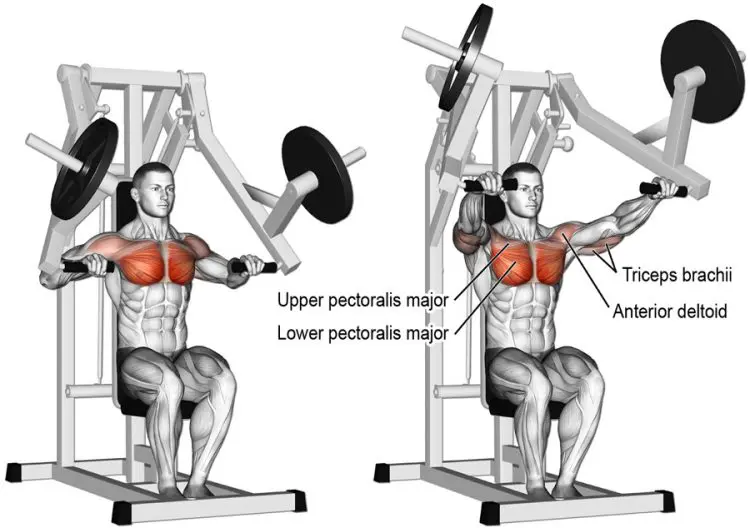
While the bench press is relatively straightforward to learn, it’s still technical enough that some lifters struggle to perform it properly. For those exercisers, there is the chest press machine. But this alternative is not just good for beginners; more advanced lifters can benefit from using it too.
The chest press allows you to train to failure in safety and without spotters. It’s also perfect for training methods like drop sets. Bodybuilders like the chest press machine because it allows them to target their pecs with more precision.
Read more about machine chest press.
2. Smith machine bench press
One of the biggest disadvantages of barbell bench presses is that they can be dangerous when performed alone. If you cannot complete a rep, you could quickly find yourself pinned under a heavy weight.
Because of this, it’s usually best to bench press with a spotter nearby. You can also use a Smith machine. With this piece of equipment, the bar moves on rails and can be locked off to stop it descending too far. That way, if you are unable to finish a rep, you can simply turn and lock the bar in place and escape unscathed.
On the downside, Smith machine bench presses force you into a fixed movement pattern, which could increase shoulder joint stress.
3. Push-ups
The humble push-up might look like an odd bench press alternative, but this popular bodyweight exercise works many of the same muscles. Because you don’t need any equipment to do push-ups, they’re an excellent option when you cannot go to the gym or train at home.
You can make push-ups easier by bending your legs and resting on your knees – three-quarter push-ups – or harder by elevating your feet or putting on a weighted vest.
Level Up Your Fitness: Join our 💪 strong community in Fitness Volt Newsletter. Get daily inspiration, expert-backed workouts, nutrition tips, the latest in strength sports, and the support you need to reach your goals. Subscribe for free!
Read more about push up.
4. Parallel bar dips
Parallel bar dips are another bodyweight bench press alternative. Dips emphasize your lower chest, so they are most like decline bench presses. This exercise is also great for building triceps size and strength.
On the downside, dips can be hard on your shoulders – maybe even more than bench presses. Avoid problems by limiting your range of motion and stopping each rep when your upper arms are parallel to the floor. But, if you find that dips still hurt your shoulders, you should skip this exercise entirely.
5. Dumbbell bench press
One of the reasons that bench presses are such a problematic exercise for many lifters is that using a bar forces you to use a pronated (overhand) grip, and both arms have to follow the same movement path. While this isn’t a problem for some exercisers, for others, it’s enough to put them off barbell bench presses for good.
Dumbbell bench presses allow you to adjust your hand position and movement path, making them more customizable and accommodating and less likely to cause shoulder pain.
If regular barbell bench presses hurt your shoulders, try using dumbbells instead. You may find that doing so allows you to bench press without pain. Like barbell bench presses, this exercise can be done on a flat, decline, or incline bench.
Read more about dumbbell bench press.
6. Dumbbell squeeze press
Almost every chest exercise has a point where the target muscles are no longer under tension. This is usually at the top of each rep when your arms are straight. This isn’t really a problem and is part and parcel of doing these exercises.
That said, you can keep your pecs under constant tension, which may help increase hypertrophy, by replacing barbell bench presses with the dumbbell squeeze press.
How to do it:
- Lie on a bench with a dumbbell in each hand. Press the weights up to arms’ length and squeeze them together.
- Bend your arms and lower the weights to the center of your chest. Push them in as hard as you can.
- Press the weights back up and repeat. Makes sure you continue squeezing the dumbbells together for the entire duration of your set.
- This exercise can be done on a flat, incline, or decline bench. It works best with hexagonal dumbbells but can also be done with round dumbbells. You’ll just need to work a little harder to keep them together.
7. Floor press
No bench? No problem! You can still work your pecs even if you only have a barbell or dumbbells. The floor press uses a very similar movement pattern, but, as the name suggests, you do it while lying on the floor. This reduces the range of motion, making this exercise easier on your shoulders than regular bench presses. It’s also a useful triceps exercise.
You can do floor presses with a standard Olympic barbell, a multi-grip football bar, a pair of dumbbells or kettlebells, or just one DB/KB.
Read more about floor press.
8. Standing cable chest press
Pressing a weight up while you are lying on your back is not especially functional. After all, when was the last time you had to lift something heavy while you were flat on your back?
This bench press alternative is done standing, so it more closely replicates things like punching and throwing. As an added benefit, this exercise also involves your core. Your abs and obliques have to work hard to keep your spine stable.
Read more about standing cable chest press.
9. Landmine press
This exercise is a sort of standing incline chest press. It works the upper pecs, anterior deltoids, and triceps, and your legs and core get in on the action, too, as they have to work to keep the rest of your body stable.
No landmine? Don’t worry; you can do this exercise by putting one end of your barbell in a corner, so it won’t move.
How to do it:
- Using a staggered stance for balance, hold the end of the bar at shoulder height with your palm facing inward.
- Press the weight forward and up to arm extension.
- Bend your arm and lower the weight back to your shoulder.
- This exercise can also be done using two landmines simultaneously, using both arms and a single landmine, or in a half-kneeling position for variation.
10. Svend press
While it’s unclear who (or even what) Svend is, this bench press alternative is still an effective chest exercise. Unlike most pressing movements, you won’t feel this one in your triceps. Instead, it involves a lot of deltoid activation, as well as your chest.
You can do this exercise with a single weight plate, but it works better with two. You can also do the Svend press with two dumbbells, making it a standing dumbbell squeeze press. It can even be performed using a medicine ball. Just make sure you keep pressing your hands inward to fully activate your pecs.
Read more about svend press.
Wrapping Up
We love the bench press. It’s a good chest builder and a great way to develop, measure, and demonstrate upper body strength. But the bench press is a double-edged sword, and while a lot of lifters get on with it really well, for others, it’s a source of frustration, pain, and injuries.
If bench presses cause you discomfort, or you just need an alternative, you now have ten awesome options to choose from. Armed with these exercises, and even if you never bench press again, you have everything you need to build a bigger, more powerful chest.

